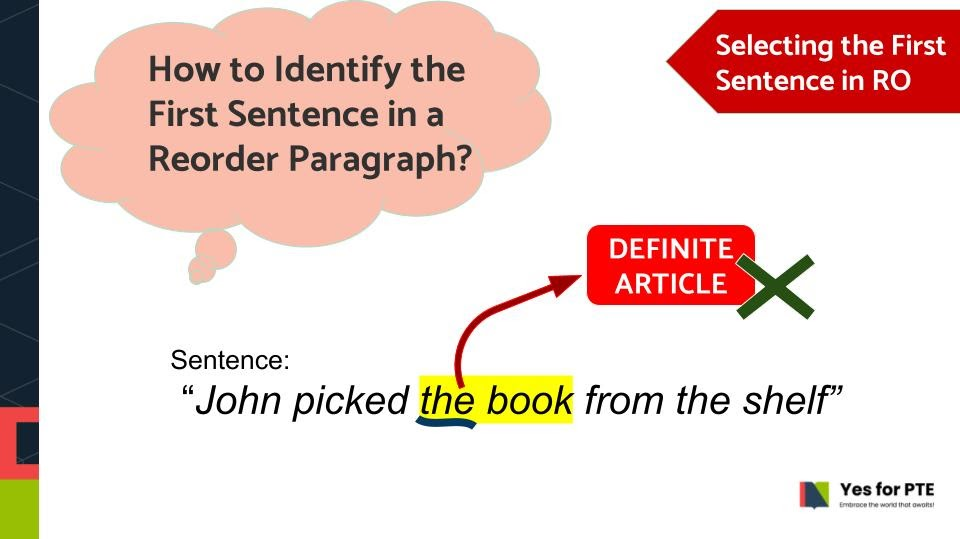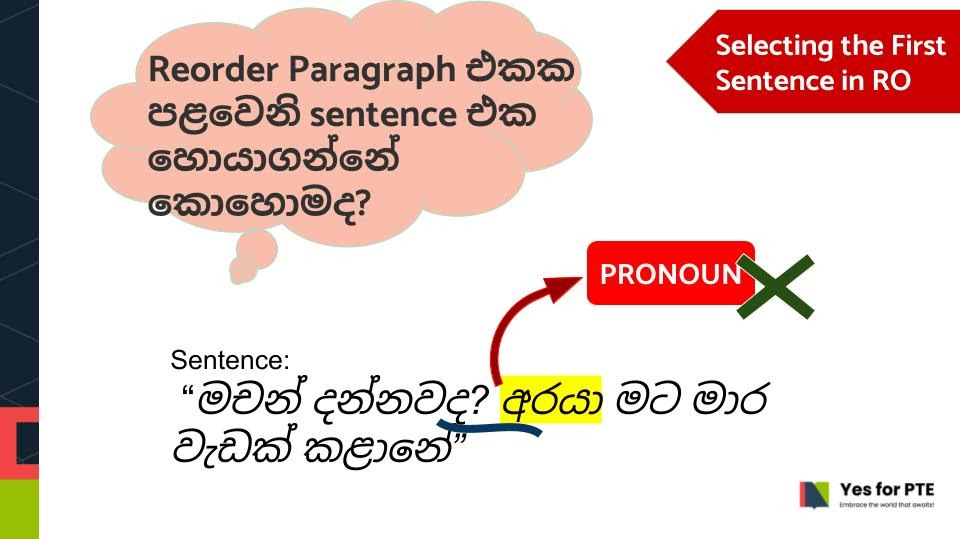How to Identify the First Sentence in a Reorder Paragraph?
Today on the Yes for PTE blog, we’re discussing a key strategy for tackling Reorder Paragraphs in the Reading section. To arrange the given sentences in the correct order, the first and most important step is identifying the first sentence. This might sound simple, but it’s actually a strategic process. Let’s break it down step by step to make it easier for you.
STRATEGY: Eliminate Sentences That Can’t Be the First
The easiest way to identify the first sentence is to eliminate the ones that cannot stand alone. These include sentences that:
- Sentences with pronouns: Words like he, she, it, they, this, that, these, those indicate that the sentence refers to something already mentioned.
For example:
“He went to the store.” → This cannot be the first sentence because we don’t know who “he” is yet.
- Use definite articles like “the”: Sentences that mention “the book,” “the car,” or “the event” assume the reader already knows what is being referred to.
For example:
“John picked the book from the shelf.” → This cannot be the first sentence unless the book has already been introduced.
- Begin with transition words: Words like “however,” “moreover,” “therefore,” and “in addition” connect ideas between sentences, so they cannot be used to start a paragraph. For instance:
“However, he decided to stay home.” → This implies there’s a preceding sentence providing context.
Examples to Clarify
Let’s explore a few examples to make this clearer:
Example 1: Pronouns
Imagine someone says to you:
“Hey, do you know? That guy did something amazing for me!”
Your immediate reaction would be:
“Who is ‘that guy’?”
This demonstrates that sentences starting with pronouns can’t come first unless the noun (or subject) they refer to has already been introduced.
Example 2: Definite Articles
“John picked the book from the book-rack.”
This sentence cannot be the first because it mentions “the book,” which assumes you already know which book is being discussed. To fix this, you need a sentence that introduces the book first, such as:
“John picked a book from the book-rack.”
Example 3: Transition Words
“She loves to read novels. Moreover, she writes her own stories.”
Here, “Moreover” connects the second sentence to the first. It signals that something additional is being said, so it cannot start the paragraph. Similarly:
“I wanted to go to the beach. However, it started raining.”
The word “however” suggests a contrast to a previous statement, so it cannot stand alone.
The Takeaway
Once you successfully identify the first sentence, arranging the rest of the sentences becomes much easier. This is because the first sentence sets the context, and the remaining sentences naturally connect to it using linking words, pronouns, or references.
Ready to Master Reorder Paragraphs?
Want to learn more strategies like this and confidently tackle the PTE Reading section? Join our PTE Rapid Boost Course, where you’ll learn all the tips and tricks to ace PTE in just two weeks!
Join us at our next FREE info session. Discover how our proven strategies can help you achieve your target PTE score.
Transform your speaking skills and ace the PTE with Yes for PTE! See you at the session.




